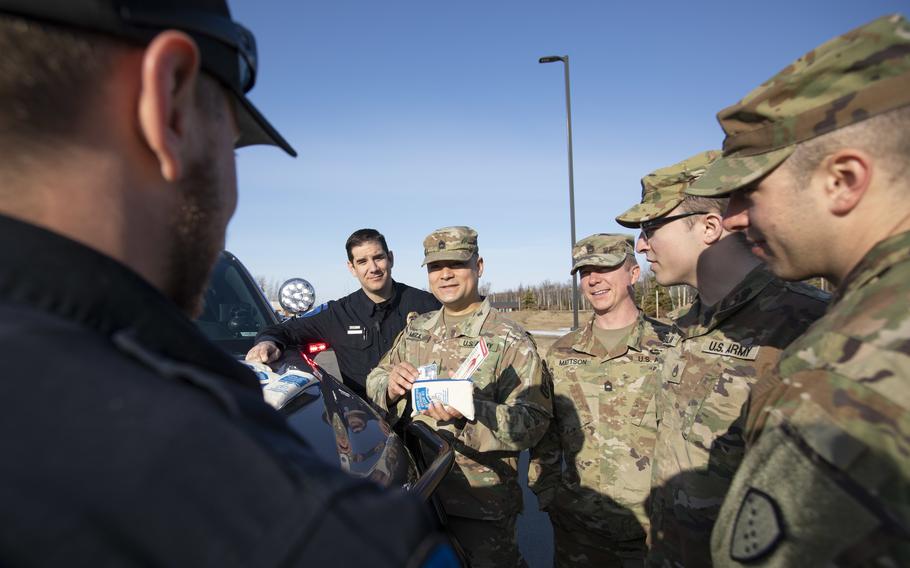
Alaska National Guardsman Sgt. 1st Class Oliver Meza (center), noncommissioned officer in charge of Drug Demand Reduction, trains Guard members and police officers in the use of naloxone kits provided through Project HOPE in Wasilla, Alaska, on April 13, 2022. The Alaska National Guard collaborates with the Office of Substance Misuse and Addiction Prevention in Project HOPE, a state-run initiative aimed at providing opioid overdose rescue kits and training mission partners and law enforcement agencies. (Victoria Granado/Alaska National Guard)
Fentanyl was involved in 88% of the deaths of service members who overdosed on illicit drugs in 2021, a steep increase in five years, according to Defense Department data provided to Congress.
“Our military is not immune to the opioid epidemic," Sen. Edward Markey, D-Mass., said in a statement Wednesday. “The Department of Defense’s latest report underscores the urgency of this moment and our need to ensure access to quality care and treatment without stigma or shame.”
Five years ago, the synthetic drug was involved in 36% of troop overdose deaths, according to Pentagon data.
Markey and other senators requested data on overdoses from the Defense Department in September and last week received 12 pages from Pentagon officials that included statistics and prevention efforts.
From 2017 to 2021, 15,293 service members overdosed on drugs and alcohol and 332 died. More than half of those who died had taken fentanyl, a synthetic opioid that is more potent than morphine, the report found.
Fentanyl, an approved pain medication being produced and sold illegally, is killing about 70,000 Americans each year, President Joe Biden said earlier this month in his State of the Union speech.
Increasingly, fentanyl is mixed with other illicit drugs or used to replace another drug entirely so that users are expecting something else, and this has led to a rise in deaths from the drug nationwide, according to the national Centers for Disease Control and Prevention.
Military officials determined service members accidentally overdosed in 84% of the deaths. Just 12% of the deaths were thought to be suicides.
“Every drug overdose is a preventable loss of life and we must work to do better,” Under Secretary of Defense for Personnel and Readiness Gilbert Cisneros wrote in his letter to senators. “The department continues to evaluate, refine, and improve strategies for overdose prevention to ensure we are making every effort to prevent these tragic deaths.”
About 10% of those who died had previously failed a drug test administered through their service, the Defense Department said.
The Army, which is the largest of the service branches, saw the most overdose deaths during the five-year period, with a slight decrease from 36 deaths in 2017 to 35 in 2021, according to the Defense Department.
However, the Navy and Marine Corps saw the number of deaths in each service double. Eleven sailors died in 2017 and 21 died in 2021. The Marines lost five sailors in 2017 and 10 in 2021.
The Air Force saw overdose deaths increase from nine to 11.
The senators requested the data after reading a story in the September issue of Rolling Stone magazine that raised concerns about overdose deaths among soldiers at Fort Bragg, N.C.
Fort Bragg lost 31 soldiers in five years to overdoses, the highest of any installation mentioned in the Pentagon report.
The Defense Department told senators that the rate of overdose deaths during the five-year period is higher in North Carolina than anywhere else — 36 deaths per 100,000 active-duty service members. Washington state had the next highest rate of 29.5 deaths per 100,000 troops, followed by Texas with 28.6.
Cisneros told senators that the Pentagon’s effort to prevent overdose deaths are “focused on integrating all drug-related data, including fatal and non-fatal drug overdoses, to ensure timely data monitoring and improve coordination, messaging, treatment intervention and promote readiness.”